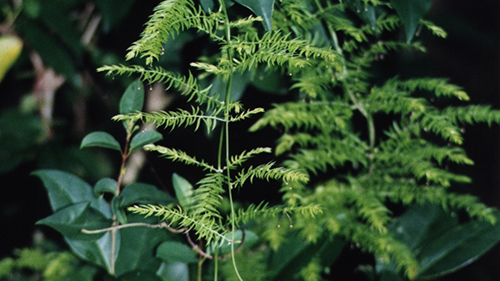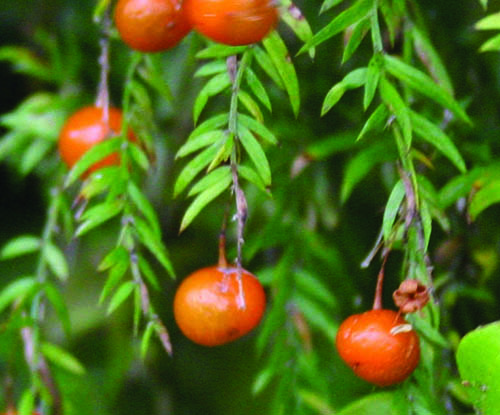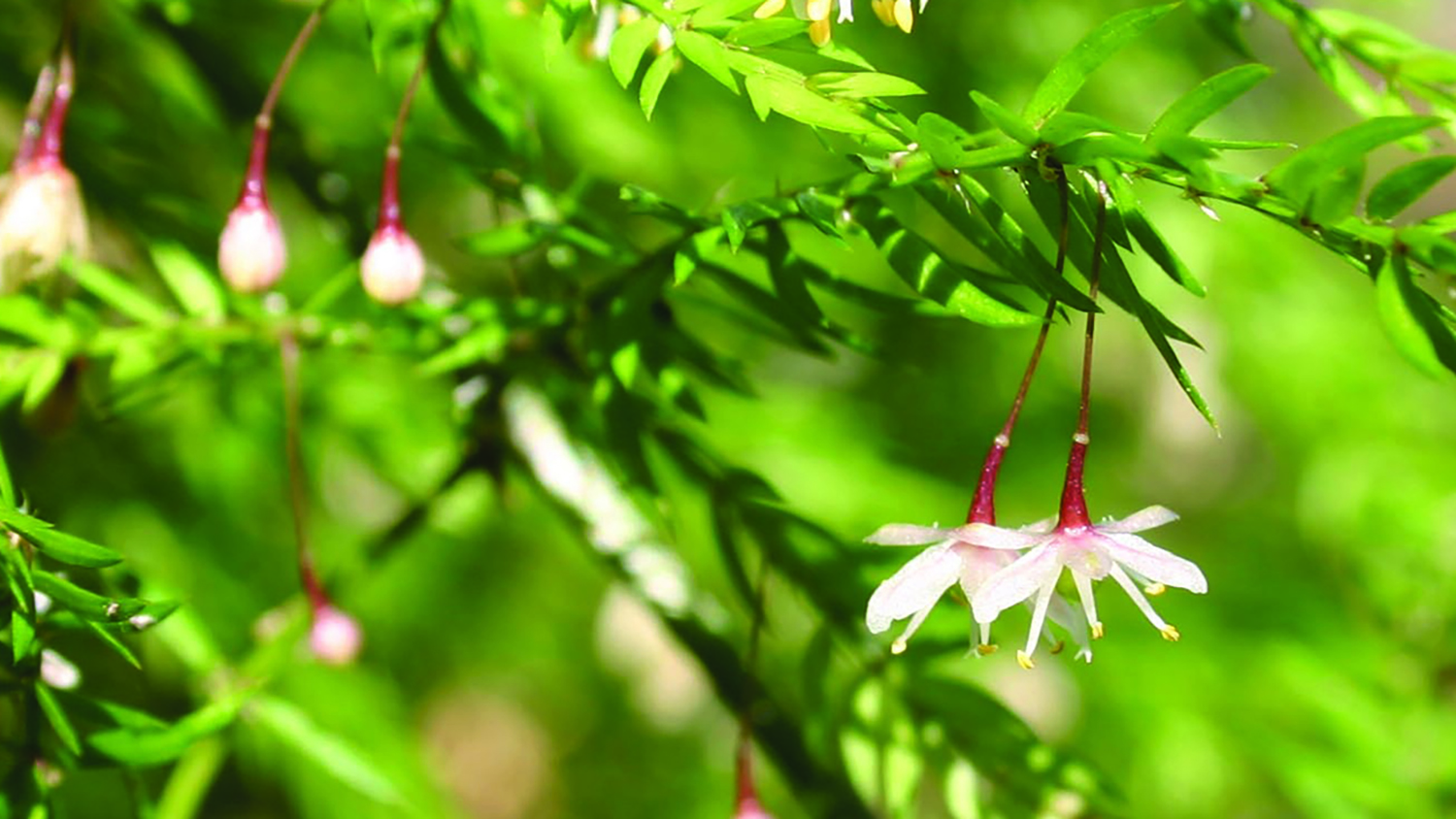Climbing asparagus is a scrambling or climbing vine native to southern Africa, that was originally introduced to New Zealand as an ornamental garden plant. It has now naturalised and spread, invading a wide range of habitats. It forms dense mats of underground tuberous roots, and tangled masses of vines across the ground and over shrubs and trees (to 3m).

What does it look like?
Flowers
- Small white flowers.
- Produced from September to December.
Fruit/seeds
- Large numbers of berries (8mm), green ripening to orange-red, each with 1-2 seeds.
- Fruit from October to February.
Leaves/stems/roots
- Feathery, fern-like leaves (5-15cm long)
- Leaves grow along the stem in one plane (will lie flat in your hand).
- Stems are thin and wiry.
- White underground tuberous roots.

Why is it a pest?
Climbing asparagus is a perennial scrambling vine that can climb to approximately 6m. It’s capable of smothering seedlings and saplings and shading out, strangling and ring barking larger trees. Climbing asparagus is able to grow a range of habitats and is tolerant of coastal conditions, semi-shade and drought. It invades coastal and lowland shrubland and forest, making it a serious threat to native ecosystems. Once established, climbing asparagus is very difficult to eradicate.
Climbing asparagus spreads by birds eating the berries and dispersing them and via root tubers and pieces of stem that can regrow. Illegal dumping of garden waste and the movement of contaminated soil can also spread this weed.
Control methods
Climbing asparagus wraps itself around its hosts, making it difficult to spray without affecting other plants. Physical control may be preferable to herbicide control as it causes less damage to other plants.
Physical control
First, cut back the leaves and stems of the plant then dig out all roots and tubers. Tubers should be burned and totally destroyed.
Herbicide control
Best results are achieved from spring to early summer.
Cut stump treatment
Cut stems 60cm-100cm above ground level and immediately spray the remaining foliage with herbicide until wet, but not dripping.
Spray application
A ‘weed wiper’ sprayer can also be used to spray the plants. If using a weed wiper, allow the wiping area to become fully saturated before starting and make sure the wiping area remains moist and clean.
Safety when using herbicides
- Follow the instructions on the manufacturer’s label.
- Always wear protective clothing.
- Always minimise the risk to your other plants.
- Contact the supplier for further advice.
Disclaimer: Any product names mentioned below are not an endorsement nor are they a criticism of similar products not mentioned.
Summary of herbicides and application methods for control
| Herbicide | Application |
| Glyphosate gel | Cut stump treatment. |
| Glyphosate | Spray application. |
| Herbicide rules will apply. You may need to notify neighbours if spraying. The Waikato Regional Plan explains the agrichemical (herbicides) use rule in section 6.2 | |
More information
Advice
- For advice and additional information on control methods, call our pest plant staff on freephone 0800 800 401.
- Chemical company representatives, farm supply stores, garden centres or the Weedbusters website can also be good sources for advice.
Publications
The following publications are available for download or from Waikato Regional Council. Contact us to request a copy (freephone 0800 800 401).






To ask for help or report a problem, contact us
Tell us how we can improve the information on this page. (optional)